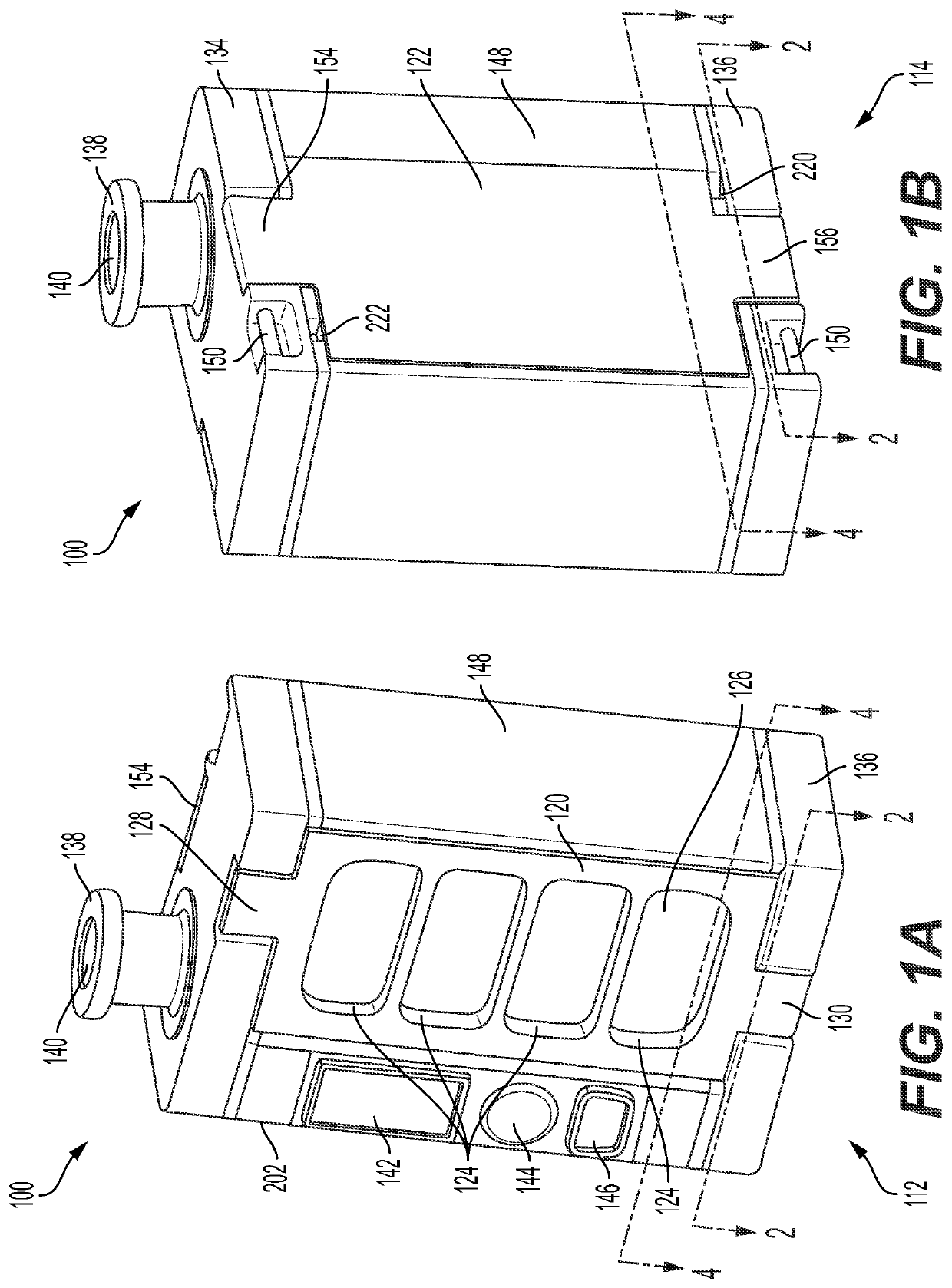Method, apparatus and system for reducing pathogens in a breathable airstream
a technology of breathable air and pathogen reduction, applied in the field of methods, can solve the problems of difficult breathing, restricted breathing, and difficulty in breathing, and achieve the effect of reducing pathogens in the breathable airstream environmen
- Summary
- Abstract
- Description
- Claims
- Application Information
AI Technical Summary
Benefits of technology
Problems solved by technology
Method used
Image
Examples
Embodiment Construction
[0045]Referring to FIGS. 1A-C, an airflow pathogen reduction device 100 is shown. In one configuration, the device 100 is a hand-held device.
[0046]The form factor of the hand-held device is generally a device that can easily be held in one hand. It is understood the hand-held device may be directed at one-handed operation or two-handed operation. In one-handed operation, a single hand is used to both support the device as well as to perform operations during use. In two-handed operation, one hand is used to support the device while the other hand performs operations with the device. It is recognized that hand-held devices may have a variety different footprints or sizes such as a device that can be typically placed in a pocket while larger devices are separately carried. Generally it is preferred, although not necessary, that hand-held devices of the type disclosed herein have dimensions with a height between 3 and 5 inches, a width between 2 and 4 inches, and a depth between 0.5 an...
PUM
 Login to View More
Login to View More Abstract
Description
Claims
Application Information
 Login to View More
Login to View More - R&D
- Intellectual Property
- Life Sciences
- Materials
- Tech Scout
- Unparalleled Data Quality
- Higher Quality Content
- 60% Fewer Hallucinations
Browse by: Latest US Patents, China's latest patents, Technical Efficacy Thesaurus, Application Domain, Technology Topic, Popular Technical Reports.
© 2025 PatSnap. All rights reserved.Legal|Privacy policy|Modern Slavery Act Transparency Statement|Sitemap|About US| Contact US: help@patsnap.com



